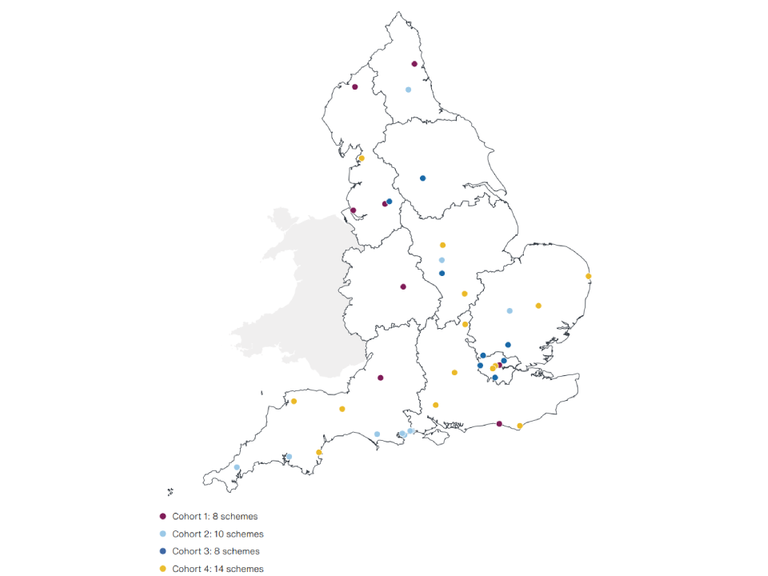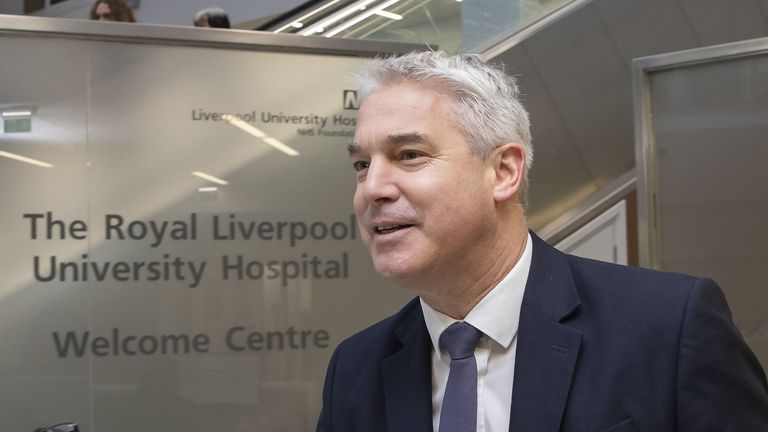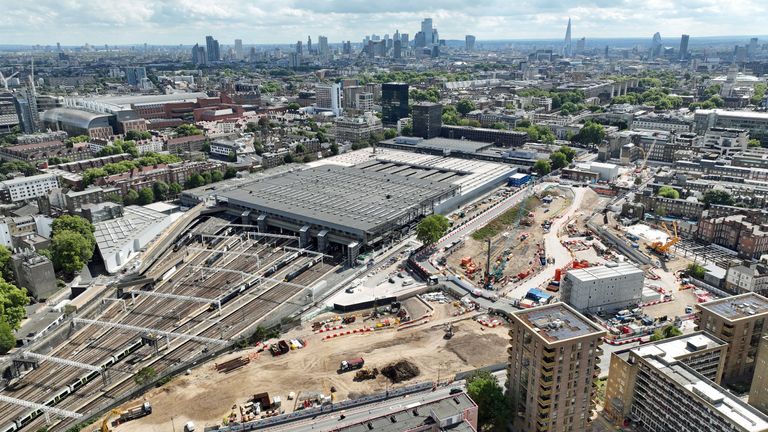The government is set to finish only 32 of its promised new 40 hospitals by 2030 as part of an over-budget and hard-to-deliver scheme, that might result in medical facilities that are “too small”, according to a “damning” report.
The National Audit Office (NAO) has completed an investigation into the programme, initiated by the 2019 Conservative manifesto and reaffirmed in October 2020.
The report lays out myriad difficulties the government faces in completing a promise first made by Boris Johnson and often repeated by the Conservative Party since.
The investigation found the government is now set to miss the 40 hospitals by 2030 pledge – with at least eight facilities set to miss the close of the decade target, and it has also highlighted problems with a government plan to use mass-produced, preconstructed hospitals that could see patients unable to be treated.
Shadow health secretary Wes Streeting branded the results “shocking” and “damning”.
The promise
One of the central tenants of Mr Johnson’s 2019 election win was a pledge to build 40 new hospitals.
Even at the time, there were questions about what this actually meant and how achievable it was.
In October 2020, Mr Johnson said he wanted to build the new hospitals by 2030. In November 2020 Rishi Sunak – then chancellor – told parliament they were increasing capital spending to “fund the biggest hospital building programme in a generation – building 40 new hospitals and upgrading 70 more”.
The NAO points out that, after Mr Sunak made that announcement, the definition of a new hospital was changed to include a whole new hospital, a new clinical building or wing, or a major refurbishment and alteration of “all but the main structure of an existing hospital”.
The audit also points out that, at the time of Mr Johnson’s October commitment, “for most of the schemes the issue of affordability had not yet been considered”.
The report states the scheme to build the 40 new hospitals by 2030 was always “likely” to change the timescale or scope, and “this was not made clear to the public at the time”.
May 2023: Barclay insists 40 hospital target will be met
What is being built?
The scheme was initially split into four cohorts, although this was later expanded to five.
A total of 48 hospitals make up the cohorts, as there are eight facilities which already had plans in place.
Of the eight projects in the first cohort, only one counts towards the total of 40 – as the other seven were already in progress.
The other four cohorts are not set to start construction until at least next year, with one of the cohort two projects also making up the eighth previously planned hospital.
Cohort three and onwards are set to use “hospital 2.0” guidelines – where blueprints of the hospitals and construction are standardised and partially made off-site.
The plans for this project have not yet been published, and there are concerns from the construction sector about whether it will be feasible to build.
Furthermore, the NAO criticised a lack of transparency in how the 40 new projects were chosen, saying there was “a failure in record keeping” and they cannot say how the hospitals were chosen.
August 2022: Majority of 40 hospitals unlikely to be finished by next election
Hospitals ‘too small’
As part of its design for the new “hospital 2.0”, the government came up with plans for what would be the minimum viable hospital – the cheapest functioning facility.
But the NAO states that this specification risks being “too small”, and the estimated capacity of new hospitals is based on assumptions that “may be unrealistic” about the number of people able to be moved out of hospitals for social care.
And estimates by the government that average stays will fall by 12% “seem poorly supported by the evidence”.
Furthermore, when the Department for Health and Social Care went to the Treasury for funding, it asked for £21.3bn, but was instead given £18.5bn.
In order to find savings, the government may need to move even more schemes into the 2030s, or lower the lowest specification of the new-style hospitals further to save money, the NAO said.
December 2021: Johnson accused of calling refurbishments ‘new hospitals’
Click to subscribe to the Sky News Daily wherever you get your podcasts
What are the delays?
One of the key factors in the delays, according to the NAO, is issues with reinforced autoclaved aerated concrete.
This material, used extensively, has now been found to be unsuitable for building past around 30 years.
As announced earlier this year, an extra five hospitals with the concrete have been added to the new hospitals scheme.
According to the NAO, only 32 of the previously promised hospitals will now be complete by 2030 to make space for the new five projects – and the eight others will be finished in the next decade.
Even this estimate is generous, as it includes regenerating facilities not previously included and splitting one project into two parts to up the figures from 31 to 32.
A lack of construction contractors has also been raised – with infrastructure projects like HS2 and a lack of clarity over what the designs will be causing uncertainty.
When will they be built, and how much will it cost?
The NAO has taken an estimate of costs and time frames.
Back in 2020, the government estimated it needed between £20bn and £30bn to build the 40 hospitals promised – plus the eight already started – by 2030.
It wanted between £3.7bn and £16bn for the first five years – and was given £3.7bn by the Treasury under Mr Sunak.
As such, a decision was taken to do smaller projects first and aim at completing large ones later in the decade.
In the first three years, “slow progress” was made on the hospitals – but three opened by June of this year, although none of them were part of the 40 new hospitals.
The other five suffered delays of between one and 16 months.
Cohort two was expected to start in 2022, but as of May 2023 no building had started, although £11m of preconstruction work had taken place.
The first of the 40 new hospitals is expected to open in late 2023, and the second in late 2025.
Cohorts three and four were expected to start in 2025, and the fifth later in the 2020s.
Now, the NAO reckons Cohort three will not open until 2029 or 2030.
In terms of cost, both cohorts one and two have risen by almost 50%, overrunning by a total of £1.2bn.
On top of the £3.7bn for the first half of the 2020s, the Treasury has indicated it will supply £18.5bn for the rest of the scheme – but this was only up to 2031, and with the overrun more money could become available.
Inflation will also eat into the budget, and the NAO suggest the Treasury and health department might have to renegotiate the budgets.
Gareth Davies, the head of the NAO, said: “The programme has innovative plans to standardise hospital construction, delivering efficiencies and quality improvements. However, by the definition the government used in 2020 it will now deliver 32 rather than 40 new hospitals by 2030.
“Delivery so far has been slower than expected, both on individual schemes and in developing the hospital 2.0 template, which has delayed programme funding decisions.
“There are some important lessons to be drawn for major programmes from the experience of the New Hospital Programme so far. These include strengthening the business case process to improve confidence on affordability and delivery dates, and improving transparency for key decisions.”
Shadow health secretary Wes Streeting said: “This shocking report could not be more damning of the failing new hospitals programme.
“The so-called 40 new hospitals are over-budget, behind schedule, and may be too small. Many are not ‘new’, others are not ‘hospitals’, and there aren’t 40 of them. In fact, just one hospital is on track to be built by the next election.”
A DHSC spokesperson said: “The NAO’s report acknowledges that despite changes to the original programme, 40 new hospitals are still expected to be delivered by 2030 and praises the programme’s innovative plans to standardise hospital construction, deliver efficiencies and improve quality.
“We remain firmly committed to delivering these hospitals, which are now expected to be backed by over £20bn of investment – helping to cut waiting lists so people can get the treatment they need quicker. Three new hospitals have already opened and more will open this year so patients and staff can benefit from major new hospital buildings, equipped with the latest technology.”






